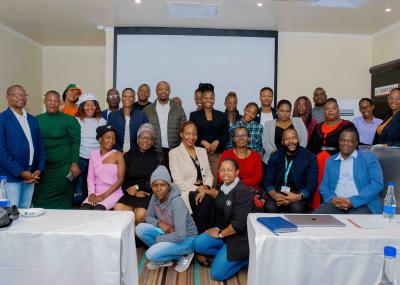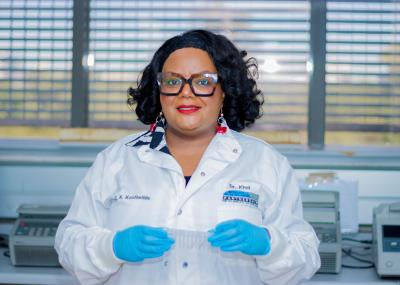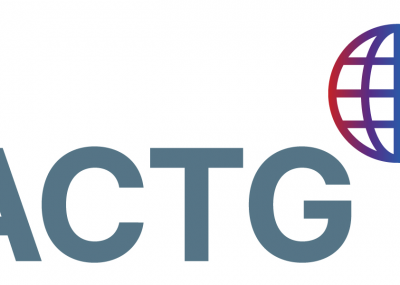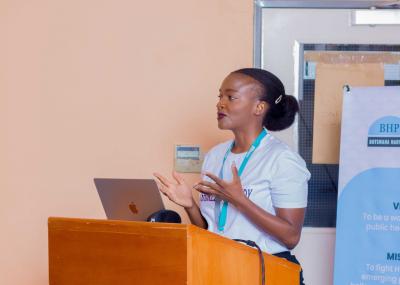Background: Child-friendly fixed-dose combination (FDC) antiretroviral therapy (ART) options are limited. We evaluated the pharmacokinetics, safety, and tolerability of dispersible and immediate-release FDC abacavir, dolutegravir, and lamivudine taken once per day in children younger than 12 years with HIV.
Methods: IMPAACT 2019 was an international, phase 1-2, multisite, open-label, non-comparative dose-confirmation study of abacavir, dolutegravir, and lamivudine in children younger than 12 years. Participants were enrolled across five weight bands: those weighing 6 kg to less than 25 kg received abacavir (60 mg), dolutegravir (5 mg), and lamivudine (30 mg) dispersible tablets (three to six tablets depending on body weight), and those weighing 25 kg to less than 40 kg received abacavir (600 mg), dolutegravir (50 mg), and lamivudine (300 mg) in an immediate-release tablet. At entry, participants were ART naive or ART experienced and virologically suppressed on stable ART for 6 months or more. Dose confirmation was based on pharmacokinetic and safety criteria in the first five to seven participants in each weight band to week 4; all participants were followed up to week 48. We present the results for the primary objectives to assess pharmacokinetics, confirm dosing, and evaluate safety through 24 weeks across all weight bands. The trial is registered with ClinicalTrials.gov (NCT03760458).
Findings: 57 children were enrolled and initiated study drug (26 [46%] female and 31 [54%] male; 37 [65%] Black, 18 [32%] Asian, and 1 [2%] had race reported as unknown). Within each weight band, 6 kg to less than 10 kg, 10 kg to less than 14 kg, 14 kg to less than 20 kg, 20 kg to less than 25 kg, and 25 kg or higher: the geometric mean dolutegravir area under the concentration time curve over the 24 h dosing interval (AUC0-24 h) was 75·9 h·μg/mL (33·7%), 91·0 h·μg/mL (36·5%), 71·4 h·μg/mL (23·5%), 84·4 h·μg/mL (26·3%), and 71·8 h·μg/mL (13·9%); dolutegravir concentrations 24 h after dosage (C24 h) were 0·91 μg/mL (67·6%), 1·22 μg/mL (77·5%), 0·79 μg/mL (44·2%), 1·35 μg/mL (95·5%), and 0·98 μg/mL (27·9%); abacavir AUC0-24 h was 17·7 h·μg/mL (38·8%), 19·8 h·μg/mL (50·6%), 15·1 h·μg/mL (40·3%), 17·4 h·μg/mL (19·4%), and 25·7 h·μg/mL (14·6%); lamivudine AUC0-24 h was 10·7 h·μg/mL (46·0%), 14·2 h·μg/mL (23·9%), 13·0 h·μg/mL (15·6%), 14·5 h·μg/mL (16·6%), and 21·7 h·μg/mL (26·2%), respectively. Pharmacokinetic targets and safety criteria were met within each weight band, and thus dosing of abacavir, dolutegravir, and lamivudine was confirmed at the originally selected doses. 54 (95%) of participants were treatment experienced and all who continued taking the study drug remained virologically suppressed (<200 copies per mL) through week 24. Virological suppression was achieved in two of three participants who were ART naive by week 24. There were no grade 3 or higher adverse events related to abacavir, dolutegravir, and lamivudine and no discontinuations because of toxicity to week 24. Both formulations were well tolerated.
Interpretation: Dosing of abacavir, dolutegravir, and lamivudine was confirmed in children weighing 6 kg to less than 40 kg, and both FDC formulations were safe, well tolerated, and efficacious through 24 weeks of treatment. These findings support global efforts to expand the availability of FDC abacavir, dolutegravir, and lamivudine to children with HIV.
Funding: National Institute of Allergy and Infectious Diseases, the Eunice Kennedy Shriver National Institute of Child Health and Human Development, the National Institute of Mental Health, ViiV Healthcare, and GlaxoSmithKline.




